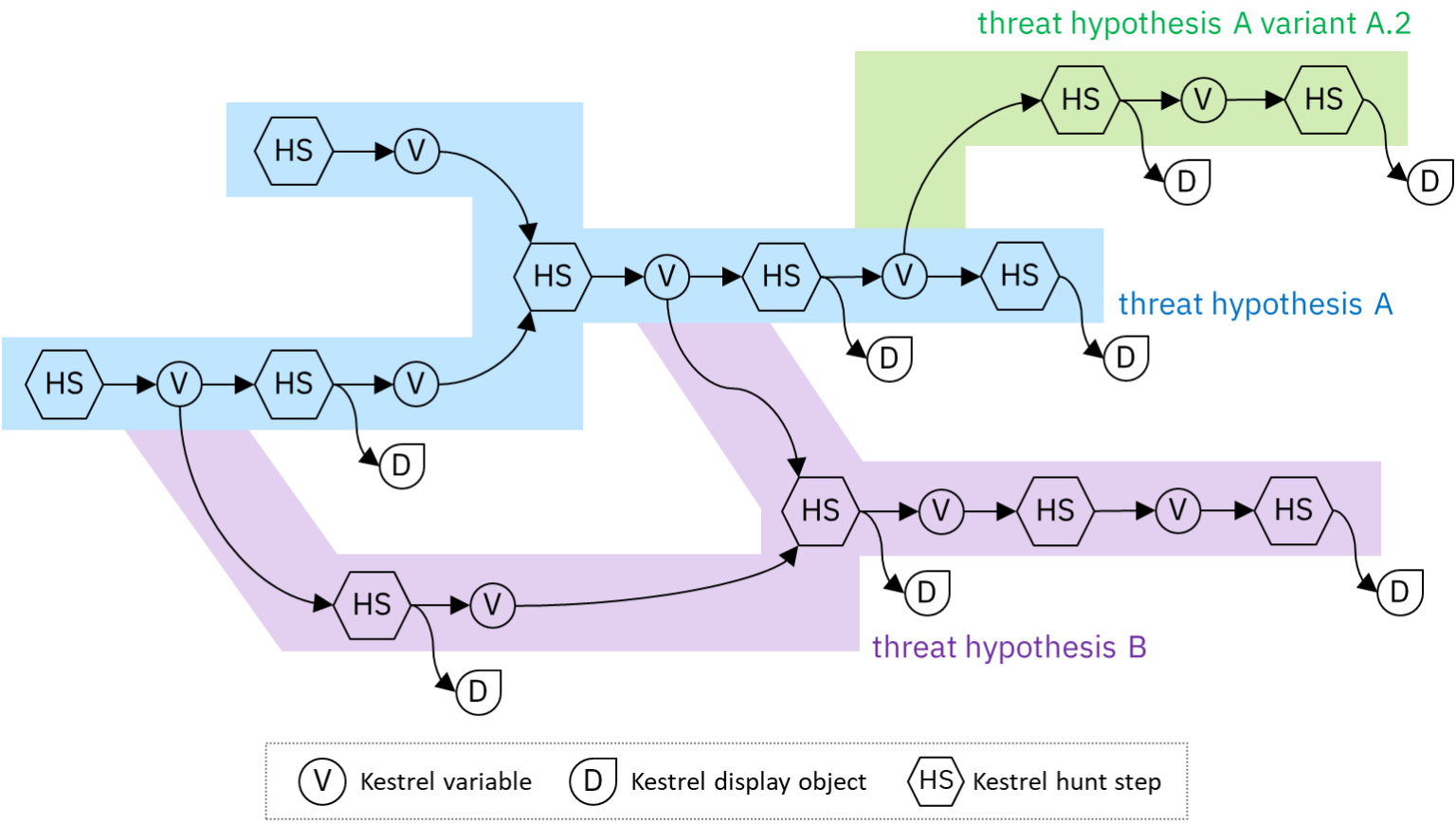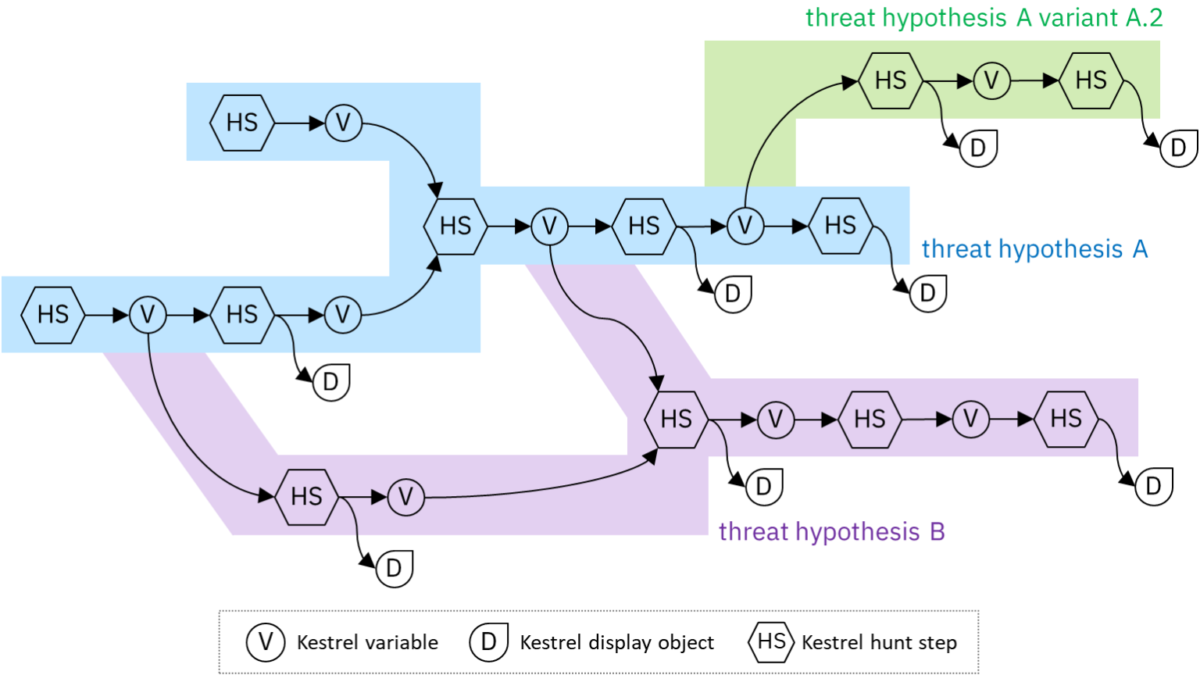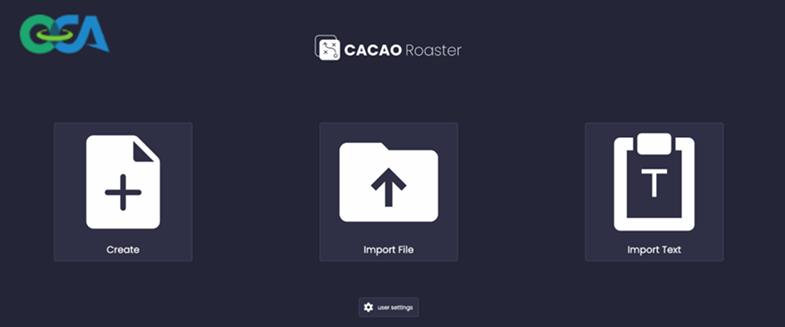
Practicing Backward And Forward Tracking Hunts on A Windows Host
July 26, 2021
The Increased Need for Security Integration Standards
October 5, 2021In our last blog post, we hunted with a Kestrel analytics to enrich network-traffic with domain information. As a hunter, you may be using enrichment APIs, proprietary detectors, Open Source software, or your own logic. How to use them in a
Kestrel hunt? How to make them reusable across different hunts? And how to share the exciting analytics with the hunting community?
In this blog post, I’ll show you how to create your own Kestrel analytics and how to share them with the hunting community. Analytics in Kestrel are a form of “foreign function interface.” You can think of them as plugins: additional functionality that enable you to enrich your cybersecurity data using external resources likes APIs, Open Source software, or your own logic. More to read in the Kestrel documentation on Applying Analytics.
While Kestrel supports multiple methods of running analytics via its modular architecture, this blog will focus on using Docker. Using Docker as the analytics interface lets you use any language you want to build an analytics; in this blog post, I will give an example creating a Kestrel analytics in Python.
Table of Content
- The Kestrel Analytics Repository
- Create Your Own Analytics Module
- Put Clustering to Work
- Dockerize it
- Try It Out
- Wrap It up and Share
The Kestrel Analytics Repository
To get started with Kestrel analytics, first clone the Kestrel analytics repo:
$ git clone https://github.com/opencybersecurityalliance/kestrel-analytics.gitEach analytics in the repo has a README.md that explains how to build and use it. For example, the suspiciousscoring analytic’s README shows how to build the docker image:
$ docker build -t kestrel-analytics-susp_scoring .It also shows example Kestrel statements that use the analytic:
procs = GET process
FROM file://samplestix.json
WHERE [process:parent_ref.name = 'cmd.exe']
APPLY docker://susp_scoring ON procsIn this example, the first statement creates a variable called proc that gets assigned entities of type process (a STIX Cyber Observable object type) from a local STIX 2.0 Bundle that match the STIX Pattern [process:parent_ref.name = 'cmd.exe']. This pattern matches processes whose parent name is cmd.exe. Next, the susp_scoring analytics is applied to that procs variable; it will score the process entities in procs and add a x_suspicious_score attribute (or “property” in STIX terminology) to each process.
Create Your Own Analytics Module
Creating your own analytics is easy, like dockerizing any other piece of code. To get started, we’ve included a template that you can copy:
$ cp -r template/ analytics/my_analyticBuilding the image is trivial:
$ cd analytics/my_analytic
$ docker build -t kestrel-analytics-my_analytic .That’s it! It’s now available to Kestrel. Here’s the example in action in a Jupyter Notebook running the Kestrel Jupyter Notebook Kernel:

The example returns a Kestrel display object—in this case, a small chunk of HTML that says, “Hello World! — a Kestrel analytics”. It also adds a new attribute to all entities of the input variable procs, as can be seen using Kestrel’s DISP command:

Put Clustering to Work
Now let’s make our analytics do something useful, something frequently used in exploratory data analysis—clustering. Since we decide to implement the analytics in Python, we can employee the scikit-learn library to build a K-means clustering analytics.
Kestrel Analytics can add/modify attributes of entities from any variable passed in as an argument. And it can return not only the updated variables but also a display object for building visualization analytics (check APPLY command
for details).
For simplicity, let’s define the analytics to build:
- It only takes one argument or one Kestrel variable as input.
- It adds one new attribute to the input objects: the cluster number each
object got assigned to by the K-means algorithm. - It yields no display object—let’s simply remove code for the display object.
The developers of analytics define the requirement and usage of analytics. Some analytics are only applicable on a specific type of entities, e.g., susp_scoring on process entity variables, while some may be applicable to multiple entity types.
K-means requires numerical inputs, and it makes more sense to execute it against byte counts like src_byte_count and dst_byte_count of network traffic entities (network-traffic STIX cyber observable type) than process name and command line of process entities. To start simple, let’s only deals with one entity type—network-traffic—in our new Kestrel analytics.
Let’s get some ideas of the data of which the analytics will be applied; I use a GET statement to extract DNS connections from a synthetic dataset I have on my laptop:

Using the INFO command, we can see what attributes the entities in dns_conns have (and thus confirm that this STIX bundle did include the byte counts, which are optional):

Note that src_byte_count and dst_byte_count appear in the list of “Entity Attributes.”
Now that we have some numerical data, we’re ready to try out K-means. We’ll want a way to tell K-means which attributes to look at, as well as how many clusters to find. We can use Kestrel analytics parameters for that. The full syntax for the APPLY command is:
APPLY analytics_identifier ON var1, var2, ... WITH x=1, y=abcThe WITH clause allows us to send parameters to our analytic, so we’ll use it to pick the attributes of the input data and specify the number of clusters.
Analytics parameters are passed to the docker container as environment variables, so when our container starts up, we’ll need to read those values.
Let’s look at the complete code, and then walk through it:
import os
import pandas as pd
from sklearn.cluster import KMeans
# Kestrel analytics default paths (single input variable)
INPUT_DATA_PATH = "/data/input/0.parquet.gz"
OUTPUT_DATA_PATH = "/data/output/0.parquet.gz"
# Our analytic parameters from the WITH clause
# Kestrel will create env vars for them
COLS = os.environ['columns']
N = os.environ['n']
def analytics(df):
# Process our parameters
cols = COLS.split(',')
n = int(N)
# Run the algorithm
kmeans = KMeans(n_clusters=n).fit(df[cols])
df['cluster'] = kmeans.labels_
# return the updated Kestrel variable
return df
if __name__ == "__main__":
dfi = pd.read_parquet(INPUT_DATA_PATH)
dfo = analytics(dfi)
dfo.to_parquet(OUTPUT_DATA_PATH, compression="gzip")The values of constants INPUT_DATA_PATH and OUTPUT_DATA_PATH are conventions in Kestrel for passing Kestrel variables in and out of the docker container. The Kestrel runtime will write the first input variable’s data (essentially a table) to /data/input/0.parquet.gz. This is a gzipped Parquet file. If you have more than one input variable, replace the 0 in that path with 1, 2, etc (more details in Kestrel docker analytics interface). As defined earlier, our clustering analytics will only handle one input variable.
Since the analytics is expected to add attributes (or modify the existing ones), we write out the result in the same format, but different path: /data/output/0.parquet.gz.
Don’t worry if you’ve never dealt with Parquet files before; the popular Pandas package makes reading and writing Parquet a snap. The __main__ portion of our analytics uses Pandas to read in the input variable into a Pandas DataFrame, calls our analytics function, then writes out the result.
Reading the parameters is standard Python stuff:
# Our analytic parameters from the WITH clause
# Kestrel will create env vars for them
COLS = os.environ['columns']
N = os.environ['n']Just grab the values of the environment variables, which have the same names are the parameters from our WITH clause.
In our analytics function, we have a little bit of work to do. First, our parameters are just string values we read from the environment. We want our list of attributes (which I called columns since we’re now dealing with a Pandas DataFrame) to be an actual Python list, so we use the Python string method split to split it on commas into a list of column names. Then we want n, our number of clusters, to be an actual integer. Convert it using int().
All that’s really left to do is to pass our data into the KMeans algorithm itself. We use the fit() method here—review the K-means documentation if you would like to learn more about K-means (or unsupervised machine learning in general). Notice that we pass df[cols], not df. We only want KMeans to see the columns we specified in our Kestrel APPLY statement.
Once KMeans finishes, the cluster number for each input object (in our case src_byte_count and dst_byte_count pairs) will be stored in its labels_ member array. That’s the new attribute we want, so we simply assign it as a new column cluster in our DataFrame.
We return our modified DataFrame, write back to the output path as a Parquet file, and we’re done! Our container will exit and the Kestrel runtime will see our output file, and replace the values of our variable with the table in that file. That means our new column will now be visible as a new attribute in Kestrel.
Dockerize It
We’ll need to modify the example Dockerfile a little now, since we’re adding some third party Python dependencies. Aside from that, we’ll fix up the comments at the top, but that’s it:
################################################################
# Kestrel Analytics - scikit-learn clustering
#
# Build the analytics container:
# docker build -t kestrel-analytics-my_analytic .
#
# Call the analytics in Kestrel
# APPLY my_analytic ON my_var WITH n=N,columns=...
#
################################################################
FROM python:3
RUN pip install --upgrade pip && \
pip install --no-cache-dir pandas pyarrow scikit-learn
WORKDIR /opt/analytics
ADD analytics.py .
CMD ["python", "analytics.py"]Note that we added scikit-learn to the pip command that installs pandas and pyarrow (which is needed by pandas to read and write Parquet files).
Try It Out
After rebuilding our docker image (using the same docker build command from above), we’re ready to try out our analytics. It’s not a “Hello, World” anymore; now it’s actually doing some analysis—k-means clustering.
In a Kestrel session in a jupyter notebook, we can run our new analytics with parameters:
APPLY docker://my_analytic ON dns_conns WITH n=2, columns=src_byte_count,dst_byte_countLet’s display our modified input variable:

Notice the cluster column—it contains the cluster number picked by KMeans. Since we asked for 2 clusters, that column will have either 0 or 1 in it.
Now we can filter our data using that column in Kestrel:

Only 8 of the 1393 objects got assigned to cluster 1, so I called these outliers.
Wrap It up and Share
That’s it; we’re done. We built a new Kestrel analytics, using scikit-learn and pandas. Now we can cluster our security data in Kestrel like a data scientist! All it took was dockerizing a small piece of code and following a few simple Kestrel conventions for passing data in and out of our container.
Time to polish it (maybe making it applicable to multiple entity types) and make a pull request (PR) to the Kestrel analytics repo to share it with our colleagues, friends, and other threat hunters in the community.





